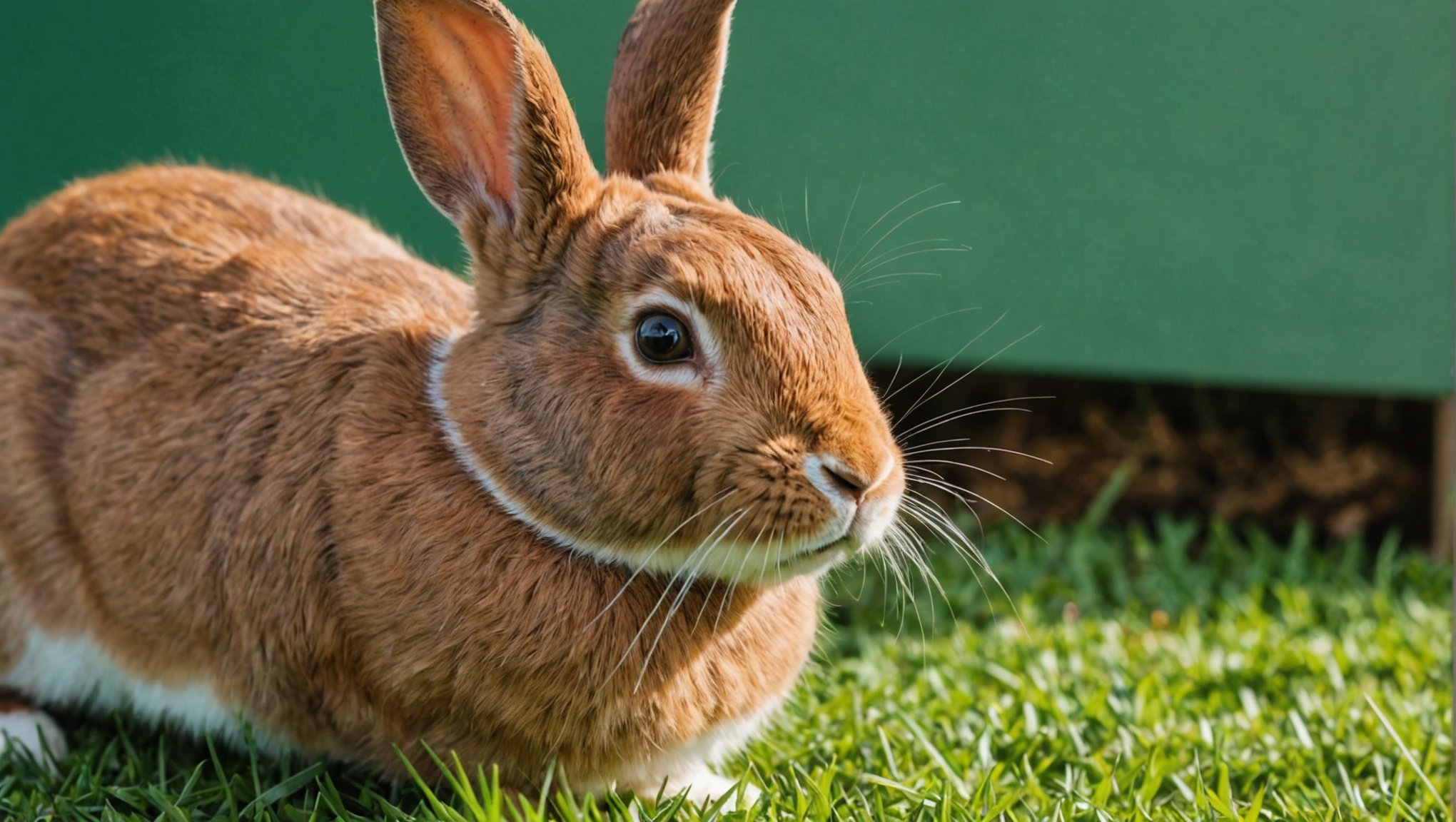Top Strategies for Enhancing Your Solo Pet Rabbit’s Life: A Guide to Happiness and Enrichment
Understanding Your Rabbit’s Needs
When it comes to ensuring your solo pet rabbit leads a happy and enriched life, it’s crucial to understand their fundamental needs. Rabbits are highly social animals that thrive in environments where they can express their natural behaviors.
Housing and Space
Proper housing is the cornerstone of rabbit care. According to the House Rabbit Society, a rabbit’s enclosure should be at least 4-6 times the length of the rabbit when stretched out, with ample height to allow them to stand on their hind legs without their ears touching the top of the cage[1].
Have you seen this : Top Fish Species Perfect for Starting Your Marine Aquarium Journey
Here’s a detailed breakdown of what to consider for your rabbit’s housing:
- Minimum Enclosure Size: Ensure the enclosure is spacious enough to accommodate your rabbit’s full stretch.
- Height: The enclosure should be tall enough for your rabbit to stand up without its ears touching the top.
- Outdoor vs. Indoor: If housed outdoors, the hutch should be elevated off the ground, protected from wind, rain, and snow. For indoor rabbits, maintain a stable, warm temperature away from drafts.
- Bedding: Use ample bedding such as straw or hay for warmth and comfort.
- Exercise Area: Provide regular access to a larger area for exercise outside the enclosure. This can significantly reduce stress and promote natural behaviors[1].
Dietary Requirements
Rabbits are herbivores with complex digestive systems that require a diet rich in fiber. Here are some key dietary tips:
Additional reading : Top Strategies for Enhancing Joint Health in Senior Dogs: A Comprehensive Guide
- Hay and Fresh Greens: These should form the bulk of your rabbit’s diet. Hay helps maintain dental health, while fresh greens provide essential vitamins and minerals.
- Pelleted Rabbit Food: Limit pelleted food to prevent obesity. It should be a supplement rather than the main staple.
- Treats: Carrots and fruits should be given in small amounts as treats. Rabbits do not naturally eat root vegetables or fruits in the wild[1].
Environmental Enrichment
Environmental enrichment is vital for your rabbit’s mental health and overall well-being.
Providing Mental Stimulation
Rabbits need mental stimulation to prevent boredom and promote natural behaviors. Here are some ways to enrich their environment:
- Hiding Spots and Tunnels: Provide hiding spots, tunnels, and chew toys to keep your rabbit engaged.
- Climbing Structures: Include structures for climbing and hiding to increase exploratory activities.
- Safe Chew Toys: Offer safe chew toys to satisfy their natural urge to chew and prevent damage to your home[1].
Social Needs and Bonding
While many people think of rabbits as solitary animals, they are actually highly social and benefit greatly from interaction.
Social Interaction with Owners
Regular interaction with your rabbit can strengthen your bond and enhance their quality of life. Here are some tips:
- Spend Quality Time: Spend time with your rabbit daily, engaging in activities like feeding, grooming, and play.
- Positive Reinforcement Training: Use positive reinforcement techniques, such as clicker training, to teach desired behaviors and build trust[1].
Social Interaction with Other Rabbits
If possible, keeping your rabbit with a compatible companion can be highly beneficial.
- Compatibility: Ensure the rabbits are compatible to avoid any conflicts.
- Introduction Process: Introduce the rabbits slowly and under supervision to ensure a smooth bonding process[1].
Health and Wellness
Maintaining your rabbit’s health is crucial for their happiness and longevity.
Regular Check-Ups
Regular veterinary check-ups are essential to monitor your rabbit’s health.
- Annual Check-Ups: Schedule annual check-ups with a veterinarian experienced in rabbit care.
- Monitoring Health: Keep an eye out for signs of illness, such as changes in appetite, stool quality, or behavior[5].
Nutrition and Hydration
A balanced diet and access to fresh water are critical for your rabbit’s health.
- Fresh Water: Ensure your rabbit always has access to fresh, clean water.
- Balanced Diet: A diet rich in hay, fresh greens, and limited pellets helps maintain digestive health. Avoid overfeeding treats like carrots and fruits[1].
Practical Tips and Advice
Here are some practical tips to make sure your solo pet rabbit leads a happy and enriched life:
Creating a Safe Home Environment
- Rabbit-Proof Your Home: Secure any loose wires, toxic substances, and fragile items to prevent accidents.
- Provide a Safe Zone: Designate a safe area where your rabbit can retreat if feeling overwhelmed.
Seasonal Care
- Winter Care: Ensure your rabbit’s water supply doesn’t freeze and provide extra food to meet their increased energy needs during colder months.
- Summer Care: Keep your rabbit cool by providing shade and ensuring their enclosure is well-ventilated[1].
Table: Comparing Indoor and Outdoor Housing for Rabbits
| Aspect | Indoor Housing | Outdoor Housing |
|---|---|---|
| Temperature | Stable, warm temperature away from drafts | Protected from wind, rain, and snow; elevated off the ground |
| Safety | Secure from predators and toxic substances | Protected from predators; secure fencing around the enclosure |
| Exercise | Supervised indoor playtime | Access to a larger outdoor area for exercise |
| Comfort | Cozy bedding; away from drafts | Ample bedding such as straw or hay; cover or tarp for protection |
| Health Risks | Less risk of parasites and diseases | Higher risk of parasites and diseases if not properly protected |
List: Essential Items for Your Rabbit’s Environment
- Hiding Spots and Tunnels: To provide mental stimulation and a sense of security.
- Climbing Structures: To increase exploratory activities and exercise.
- Safe Chew Toys: To satisfy the natural urge to chew and prevent damage to your home.
- Fresh Greens and Hay: To ensure a balanced diet rich in fiber.
- Pelleted Rabbit Food: As a limited supplement to their diet.
- Fresh Water: Always available and clean.
- Bedding: Ample bedding such as straw or hay for warmth and comfort.
- Cover or Tarp: For outdoor enclosures to protect from the elements.
Quotes and Insights
- “Rabbits need a minimum enclosure size of 4-6 times the length of the rabbit stretched out, with ample height to allow them to stand on their hind legs without their ears touching the top of the cage.” – House Rabbit Society[1]
- “Providing hiding spots, tunnels, and chew toys can prevent boredom and promote natural behaviors.” – Companion Animals New Zealand[1]
- “Regular interaction with your rabbit can strengthen your bond and enhance their quality of life.” – Companion Animals New Zealand[1]
Enhancing your solo pet rabbit’s life is a multifaceted endeavor that involves providing the right environment, diet, social interaction, and health care. By understanding and meeting these needs, you can ensure your rabbit leads a happy, healthy, and enriched life.
Remember, every small detail counts, from the size of their enclosure to the quality of their diet and the time you spend interacting with them. With the right strategies and a bit of love, you can make your home a haven for your beloved bunny.






